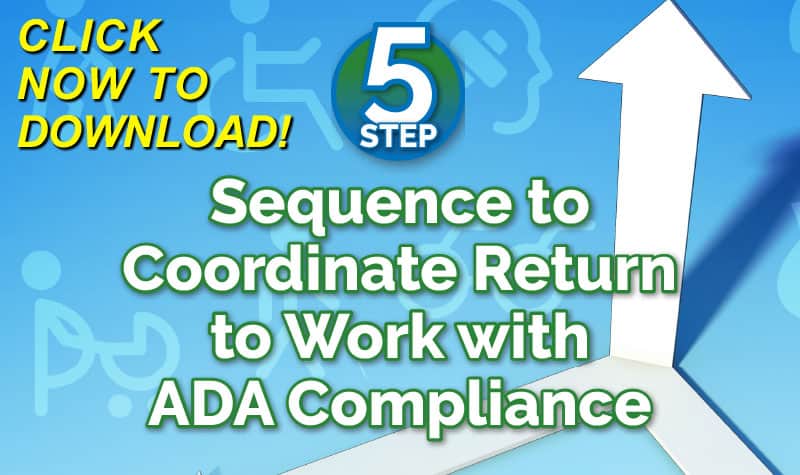Federal workers’ compensation claims are a growing area of business for many third party administration companies. With this growth comes an opportunity for team members to learn a new line of work and enhance the services they provide.
Quick Background on Federal Work Comp
The federal workers’ compensation system was established in the early 1900s to deal with work-related injuries sustained by federal employees. This program is administered under the Federal Employees Workers’ Compensation Act, and covers all federal government disability insurance in the United States.
Like state-based workers’ compensation programs, this law covers a variety of indemnity and medical benefits. Federal workers with compensable injuries in the workplace are also entitled to various vocational rehabilitation benefits.
How the Federal Workers’ Compensation Operates
The federal workers’ compensation program is the responsibility of the Office of Workers’ Compensation Programs (OWCP) within the United States Department of Labor. This office administers the benefits federal workers are entitled to if they claim to or have in fact sustained a compensable workplace injury. Other groups of federal workers’ compensation programs include the following:
- Energy Employees Occupational Illness Compensation Program;
- Federal Employees’ Compensation Program;
- Longshore and Harbor Workers’ Compensation Program; and
- Black Lung Benefits Program.
Understanding Federal Workers’ Compensation Benefits
Injured workers under the above programs are entitled to various benefits that are often found in state workers’ compensation programs. The difference lies in the determination and payment lengths of these benefits.
- Continuation of Pay or “COP” is defined under 20 C.F.R. §10.200 and serves as an injured workers wage loss benefits. For most federal work injuries, the injured party is entitled to 100% of their regular pay for a period no longer than 45 calendar days as long as the person is disabled. This percentage is then reduced and the employee continues to receive either total or partial disability benefits until they are reassigned or fully return to work. Unlike their state counterparts, COP is considered “compensation” and therefore taxable under the Internal Revenue Code. It is also subject to retirement and other deductions.
- Medical Benefits. Under the federal workers’ compensation scheme, an injured work is entitled to choose the primary doctor of their choice without objection. The ability to change doctors is limited for subsequent changes. The workers’ compensation plan pays for all reasonable and necessary medical treatment provided it is causally related to the work injury.
- Vocational Rehabilitation. Injured workers under the federal framework are also expected to make efforts to either return to their pre-injury work, or accept a comparable assignment within their work restrictions. Issues regarding return to work can include assignments to a different work shift or other differentiating characteristics.
There are also various other factors to consider when dealing with federal workers’ compensation benefits. These factors include the pay grade of an employee, length of service within the federal government and the nature of their work.
Other Factors to Consider
Dealing with federal workers’ compensation matters presents additional issues for parties involved in these cases. This includes strict limitations on the ability of employees to have their benefits discounted or terminated. The use of other traditional methods of cost containment such as utilization review and independent medical examinations is also limited based on statute and practice. If one is not familiar with these practices, it is important to consult an expert or attorney.
Author Michael Stack, Principal, COMPClub, Amaxx LLC. He is an expert in workers compensation cost containment systems and helps employers reduce their work comp costs by 20% to 50%. He works as a consultant to large and mid-market clients, is co-author of Your Ultimate Guide To Mastering Workers Comp Costs, a comprehensive step-by-step manual of cost containment strategies based on hands-on field experience, and is founder of COMPClub, an exclusive member training program on workers compensation cost containment best practices. Through these platforms he is in the trenches on a working together with clients to implement and define best practices, which allows him to continuously be at the forefront of innovation and thought leadership in workers’ compensation cost containment. Contact: mstack@reduceyourworkerscomp.com.
©2016 Amaxx LLC. All rights reserved under International Copyright Law.
Do not use this information without independent verification. All state laws vary. You should consult with your insurance broker, attorney, or qualified professional.




Thanks Silas, yes, I agree. When you break the system down to it’s core it really is about helping people heal and return to work. The good in that often gets forgotten.
Workers compensation has always seemed to be a really confusing thing. However, after my friend got hurt on the job and had to deal with it, I decided that it was best to learn a little bit about workers comp. Just in case. I think it’s really cool that under workers compensation, if an employee is injured on the job, they can choose the doctor without objection, and it pays for the medical procedures. Seems like a good idea!
I had no idea that workers compensation was becoming more and more of a big deal every year. I also was unaware that this is something that was started in the early 1900’s. It definitely seems like it is newer than that. However, it is amazing how many people this system has been able to help over the years.